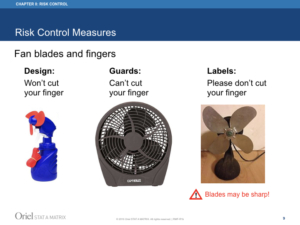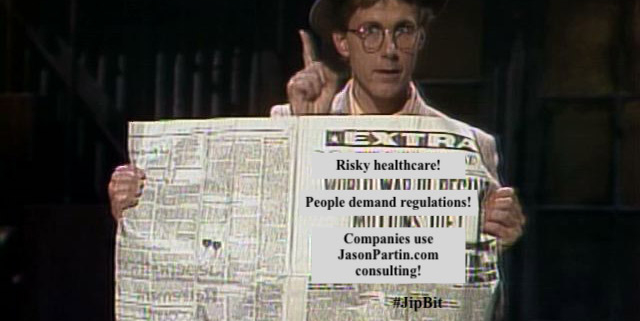Risk Control & Risk-Benefit
This article explains Risk / Benefit analysis and Risk Control methods using performances of Harry “The Hat” Anderson, a comedian, actor, and magician famous for visual humor.

This is Harry

Harry Anderson was a famous comedian, magician, actor, and producer. He was most known for his role as Judge Harry Stone in television’s Night Court, where he played a judge in New York City who did magic tricks. His career had jump-started in 1983 when he appeared on the famous comedy show Saturday Night Live, apparently shoving a needle through his arm.
I remember him fumbling for written instructions with a needle stuck through is bleeding arm, and this “stuck” in my mind as a way to illustrate the concept of risk control. Medical device companies are required to apply risk controls for devices ranging from needles to complex electronic systems, and many companies struggle to balance cost effectiveness, innovation, and applying risk control priorities.
This article uses Harry Anderson’s needle-through-arm to clarify the “point” of risk control and risk benefit analysis.
Risk Control
- Make the design inherently safe
- Add safeguards
- Provide written instructions or warnings
The priorities of risk control are illustrated using household fans in this image, used with permission from Oriel STAT-A-MATRIX, a consulting company.

For example, safeguards on needles are more effective than written warnings, which is why companies must now include some form of safeguards on needles.

 Harry’s needle-through-the-arm demonstrated how written warnings aren’t effective; he stuck his arm while fumbling for instructions. This is a real-world challenge for healthcare workers, who would get stuck by needles that had been in contact with patients’ blood. Many workers were infected with life-threatening diseases, such as HIV.
Harry’s needle-through-the-arm demonstrated how written warnings aren’t effective; he stuck his arm while fumbling for instructions. This is a real-world challenge for healthcare workers, who would get stuck by needles that had been in contact with patients’ blood. Many workers were infected with life-threatening diseases, such as HIV.
Written instructions were ineffective at protecting healthcare workers, and it was difficult to make needles inherently safe because it must be sharp to penetrate patient skin. Innovative companies found cost-effective ways to add safeguards to needle after FDA regulations for needles required more safety, and those companies excelled in the market. Companies that didn’t innovate lost in the market. In both cases, society benefited.
One day an innovative company may revolutionize needle designs with an inherently safe way to draw blood or inject medicine. When that happens they will become the new state of the art. Until then, companies can be rewarded for innovating more cost-effective and user-friendly safeguards.

Risk/Benefit Analysis



Risk / benefit isn’t a one-time event, it’s a continuous process of improving safety based on real-world evidence compared against public information and other options for patients. This process must be updated every 1-2 years for devices classified as high-risk, and “as needed” for low-risk devices. Governments require this so that patients don’t have to worry about it.

Summary
- Risk control and risk benefit analysis are required to sell medical devices in most countries.
- International risk management standards requires the highest of three possible risk controls:
- Inherently safe
- Safeguards
- Written warnings or instructions
- Risk / Benefit analysis ensures that any remaining risk is justified by comparing your risk controls to competitor products and alternative treatments.
- The EU Medical Device Regulation requires applying risk-benefit analysis
- “As needed” for class I, low-risk devices
- Every 2 years for Class IIa, medium-risk devices
- Every year for Class IIb and III, high-risk devices
Next Steps
- Oriel STAT-A-MATRIX (I consult with Oriel)
- Qunique
- Me (Jason)
Please share
Parting Thoughts
Coincidentally, my first medical device job was with a start-up company that had been founded by the original inventor of needle-stick safety features. In our interview he asked me how I would solve the problem. By then I had designed or invented dozen of magic effects, many of them from Harry Anderson’s appearances on Saturday Night Live. That job led to a series of my own medical device inventions, retirement, and transitioning into teaching using hands-on, project-based learning where many of my students design and perform magic tricks to develop engineering and public speaking skills.
Life’s too short for many people; I wish you happiness.

